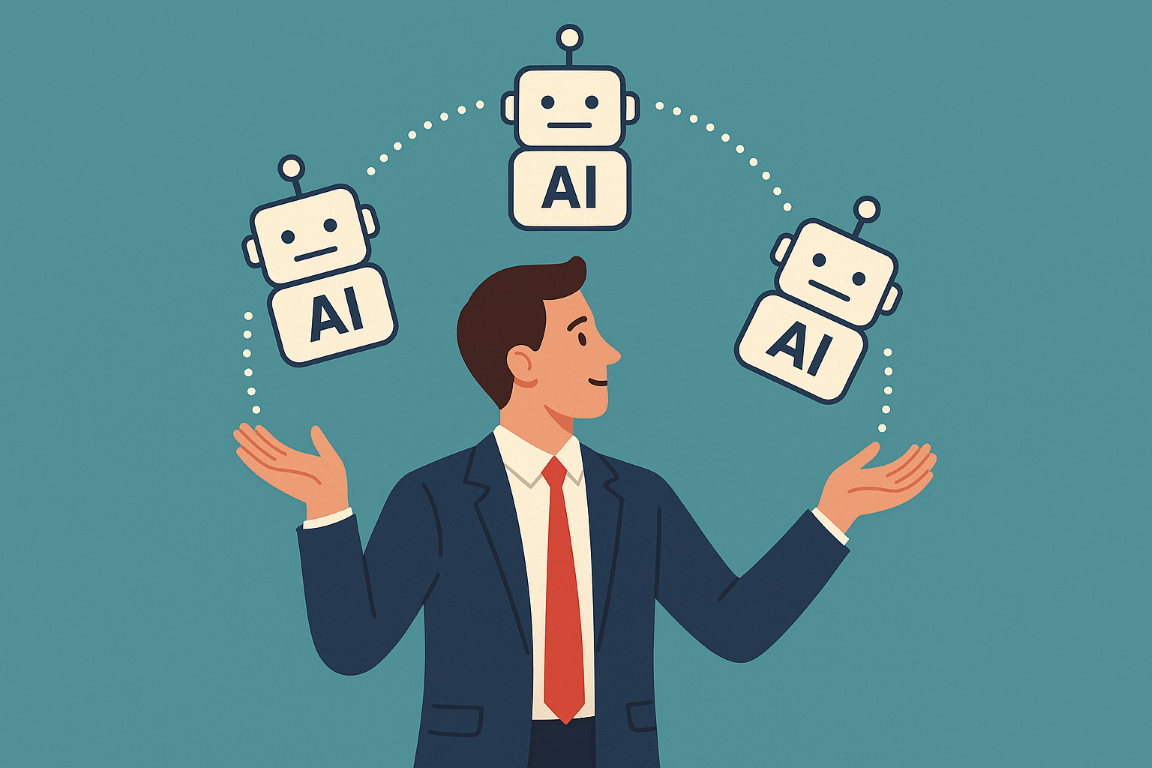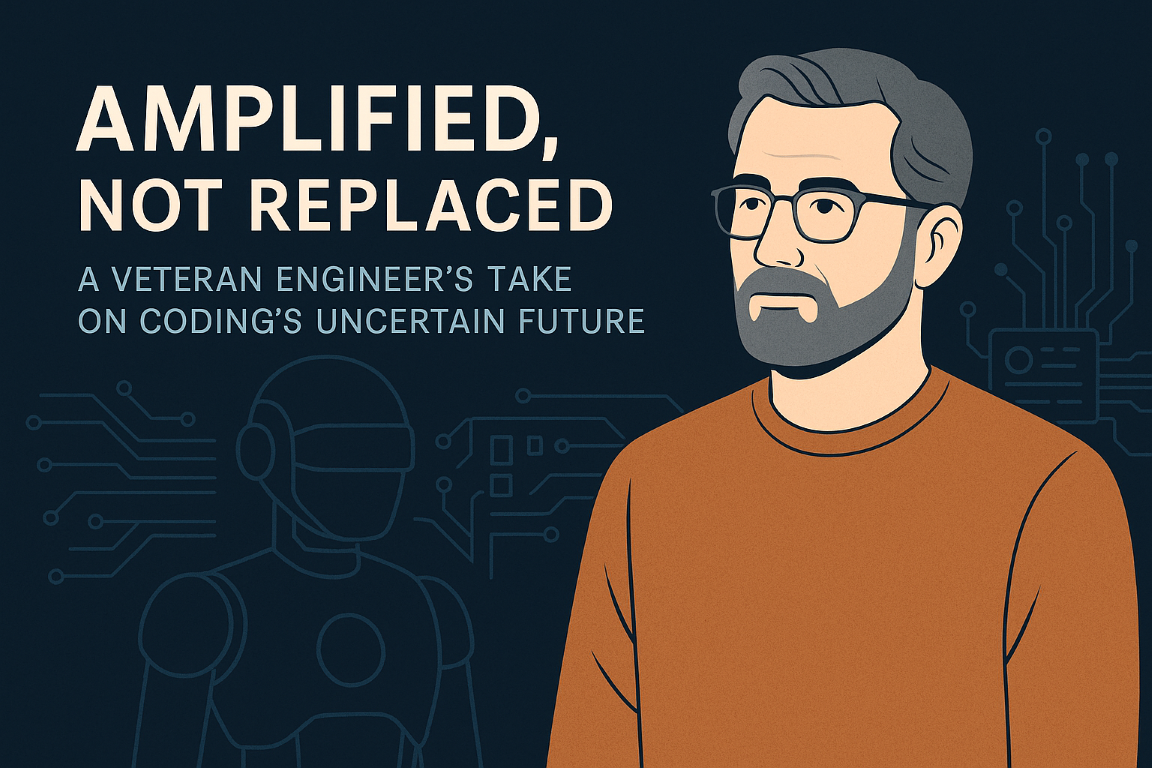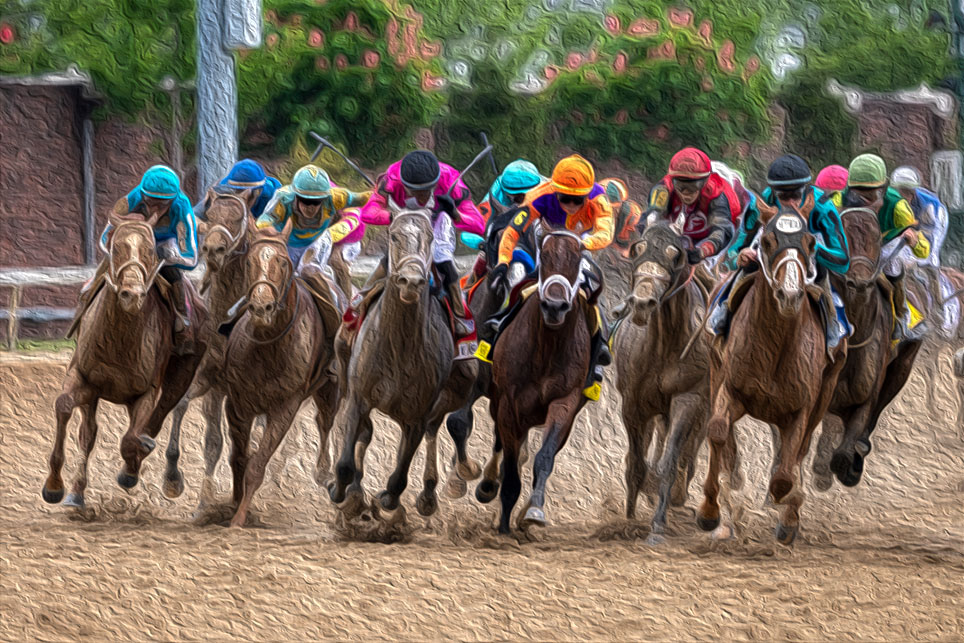(This guide was prepared using the assistance of ai. Please verify all information.)
Key Contender Analysis Based on Historical Patterns
After reviewing Derby results from 2014-2024 and analyzing our contenders in this historical context, several horses stand out as particularly well-positioned:
JOURNALISM (#8) perfectly mirrors the profile of 2023 winner Mage, who also broke from post 8. His stalking style fits the recent trend favoring mid-pack runners (2021-2024), and his consistent improvement pattern resembles many successful Derby winners. His tactical adaptability should allow him to secure ideal positioning regardless of how the pace unfolds. With the highest last-out Beyer figure (108) and consistent triple-digit speed ratings, he stands above the field from a performance standpoint.
RODRIGUEZ (#4) has the tactical versatility to employ a ground-saving trip similar to 2024 winner Mystik Dan, who won from a similar inside post. His Wood Memorial victory (earning a 101 Beyer) suggests he’s reaching peak form at the perfect time. His position drawn just outside the rail gives him options to either press forward or tuck in behind leaders – flexibility that’s proven valuable in recent Derbies.
BURNHAM SQUARE (#9) fits the profile of recent deep closers who have outperformed expectations in the Derby (Rich Strike in 2022, Mage in 2023). His Blue Grass Stakes victory demonstrated an impressive closing kick and his pattern of paired 96 Beyer figures with continued improvement makes him dangerous if the pace develops as projected. His running style positions him to capitalize on the recent trend favoring closers.
CITIZEN BULL (#1) faces the statistical challenge of the rail draw, but the historical analysis shows that inside posts can be advantageous if the horse establishes position early. His consistent Beyer figures in the mid-to-high 90s make him competitive from a speed standpoint. While conventional wisdom might dismiss the rail, the slightly moderated pace projection gives him a better chance to hang on for a piece than in a complete pace collapse scenario.
TIZTASTIC (#14) captured the Louisiana Derby with an impressive stretch run, fitting the closing profile that has succeeded in recent years. His wide post shouldn’t be overly problematic for his running style, as we’ve seen outside closers overcome similar draws (Country House from post 20 in 2019). His improving pattern suggests he could be peaking at the right time.
AMERICAN PROMISE (#5) has the advantage of a historically successful post position that produced 2017 winner Always Dreaming. His tactical speed from a favorable draw gives him options to secure good early position. D. Wayne Lukas’ experience in the Derby adds another positive factor to his chances.
The historical perspective reinforces our focus on JOURNALISM and RODRIGUEZ as the primary win contenders, with increased respect for closing specialists like BURNHAM SQUARE based on recent Derby trends.# 2025 Kentucky Derby Analysis
Horse-by-Horse Analysis with Post Positions
CITIZEN BULL (Post 1) – Bob Baffert trainee has shown impressive early speed and class with victories in the American Pharoah and Breeders’ Cup Juvenile as a 2-year-old. The rail draw is problematic, as this position hasn’t produced a Derby winner since Ferdinand in 1986. With his early speed, he’ll need to break sharply to avoid being squeezed back or trapped. The son of Into Mischief appears to need the lead to be most effective, and this post position adds a significant challenge, potentially forcing him into a damaging speed duel.
NEOEQUOS (Post 2) – Lightly regarded Florida-based runner who has shown steady improvement. Ran a creditable third in the Florida Derby after setting the pace. Like Citizen Bull, he’s drawn a historically difficult post position that hasn’t produced a Derby winner since Affirmed in 1978. This modestly bred son of Neolithic remains a long shot but has shown tactical speed. The inside draw may force his hand early.
FINAL GAMBIT (Post 3) – A late-blooming Juddmonte homebred coming off a victory in the Jeff Ruby Steaks at Turfway Park despite a troubled start. Interestingly, Post 3 produced last year’s Derby winner Mystik Dan. The Brad Cox trainee does his best running from off the pace and will need a strong pace to set up his closing kick. His inside draw should allow him to save ground throughout.
RODRIGUEZ (Post 4) – The other Baffert trainee comes in off an impressive front-running victory in the Wood Memorial. Son of Authentic has shown steady improvement and tactical versatility. Has drawn a favorable post that allows options – he can either press forward early or tuck in behind the leaders. Post 4 produced 2010 winner Super Saver and puts him in position for a ground-saving trip similar to 2024 winner Mystik Dan. His tactical speed could prove crucial if the pace scenario develops as expected.
AMERICAN PROMISE (Post 5) – D. Wayne Lukas trainee upset the Virginia Derby last out after some inconsistent efforts earlier this year. Appears to be a pace factor with tactical speed. Has drawn a historically successful post position that produced 2017 winner Always Dreaming. This favorable draw could enhance his chances.
ADMIRE DAYTONA (JPN) (Post 6) – Japanese invader surprised in the UAE Derby with a convincing win. International shippers have generally struggled in the Derby, but Japanese horses have been increasingly competitive in top American races. Has drawn a middle post that should allow for a clean trip. His running style suggests he could contribute to the early pace pressure.
LUXOR CAFÉ (Post 7) – Another Japanese runner who appears to be a pace factor based on his running lines. Has shown steady improvement and has drawn a historically successful post that produced 2021 winner Mandaloun (via disqualification). This draw should allow for a clean trip and could add to the contested early fractions.
JOURNALISM (Post 8) – Improving Michael McCarthy trainee has won 4 of 5 starts including an authoritative victory in the Santa Anita Derby. Has drawn the same post position that produced 2023 winner Mage. This favorable middle draw should allow him to establish good position while avoiding traffic problems. His stalking style fits perfectly with this post and he should be ideally positioned to capitalize on the projected pace meltdown.
BURNHAM SQUARE (Post 9) – Ian Wilkes trainee upset the Blue Grass Stakes with a determined rally, showing strong closing kick. This improving son of Liam’s Map has drawn a historically challenging post that hasn’t produced a winner since Riva Ridge in 1972. However, his closing style may mitigate the post position concerns, and he could be positioned for a sweeping outside move similar to Mage’s winning run in 2023.
GRANDE (Post 10) – Todd Pletcher’s son of Curlin comes in off a solid second in the Wood Memorial. He’s lightly raced but appears to be improving with each start. Has drawn a historically successful post that produced 2005 longshot winner Giacomo. This outside but not extreme post should suit his style. Could be part of the pace pressure scenario pressuring the inside speed horses.
FLYING MOHAWK (Post 11) – Turf/synthetic specialist who may be entered as a rabbit for another contender. Has drawn a historically challenging post that produced 1988 winner Winning Colors. Given his frontrunning style, this wider post may force him to use more energy early, potentially contributing to a fast early pace.
EAST AVENUE (Post 12) – Godolphin homebred nearly pulled off the Blue Grass. Has drawn a historically challenging post that hasn’t produced a winner since Canonero II in 1971. This outside post may force him to lose ground around turns or be caught wide, but his early speed could make him a significant pace factor applying pressure three-wide.
PUBLISHER (Post 13) – Asmussen trainee closed well for second in the Arkansas Derby behind Sandman. Has drawn a favorable post that produced 2016 winner Nyquist. This position should suit his closing style, allowing him to avoid early traffic while still saving some ground.
TIZTASTIC (Post 14) – Another Asmussen trainee who captured the Louisiana Derby in impressive fashion. Has drawn a historically challenging post that hasn’t produced a winner since Carry Back in 1961. For his closing style, however, the wide draw may be less problematic than for early speed horses. Could benefit greatly from the projected hot pace.
RENDER JUDGMENT (Post 15) – Listed as a Kenny McPeek trainee, this closer ran well for second in the Virginia Derby. Has drawn the post that produced 2020 pandemic-delayed winner Authentic. His deep closing style should work well from this position and could place him in the cavalry charge down the stretch.
COAL BATTLE (Post 16) – Improving Lonnie Briley trainee who captured the Rebel Stakes. Has drawn the post that produced 2011 winner Animal Kingdom. For his tactical style, this outside post may require skillful handling to avoid being caught wide.
SANDMAN (Post 17) – Mark Casse trainee captured the Arkansas Derby with an impressive late run. Has drawn a historically challenging post that has never produced a Derby winner. For his closing style, however, the wide draw allows him to gradually work his way in. If able to secure a clean trip into the far turn, his closing kick could be devastating in a race with projected fast early fractions.
SOVEREIGNTY (Post 18) – Bill Mott trainee captured the Fountain of Youth and ran well for second in the Florida Derby. Has drawn a challenging post that produced 2019 winner Country House (via disqualification). This extremely wide post will require him to be either hustled early or drop back and save ground. If he can establish position and save ground into the far turn, he could be positioned for a stretch rally.
CHUNK OF GOLD (Post 19) – Improving longshot who ran a strong second in the Louisiana Derby. Has drawn a historically successful post that produced 2012 winner I’ll Have Another. Despite the extreme outside position, his closing style may help mitigate some concerns.
OWEN ALMIGHTY (Post 20) – Speedy Brian Lynch trainee who captured the Tampa Bay Derby impressively. Has drawn the extreme outside post that produced 2022 longshot winner Rich Strike. For his speed-oriented style, this draw poses significant challenges as he’ll need to clear much of the field or be caught extremely wide. Could contribute to the early pace pressure if sent from the gate.
Race Scenario
The 150th Kentucky Derby shapes up as a strategically complex pace scenario, with multiple speed elements creating challenging dynamics for both frontrunners and closers. Examining the past two Kentucky Derbies provides valuable context:
For the 2025 Derby, we project a half-mile in approximately 46.10 seconds – closer to the blazing pace of 2023 than the moderate tempo of 2024. This represents a genuinely fast pace that should test the stamina of frontrunners while creating opportunities for stalkers and closers.
Citizen Bull (#1) has little choice but to fire aggressively from the rail to secure position. He’ll likely find company quickly as Grande (#10) applies pressure from the outside, with East Avenue (#12) potentially pressing three-wide. The international runners Admire Daytona (#6) and Luxor Café (#7) could add to the pace equation, resulting in a first quarter around 22.90 seconds.
The tactical Rodriguez (#4) should benefit from his inside draw to secure a tracking position, perhaps 3-4 lengths behind the leaders. Journalism (#8) appears perfectly positioned from his middle post to settle in a golden stalking position about 4-6 lengths off the pace. Burnham Square (#9) has shown the closing ability to position himself for a stretch run from mid-pack.
As the field reaches the far turn, expect the pace to take its toll on the early leaders. Grande might attempt to shake loose, but Citizen Bull clinging to the inside position and East Avenue maintaining pressure could result in the leaders tiring significantly approaching the quarter-pole. With our projected 46.10 half, the race should set up well for stalkers and closers to make their moves as the frontrunners begin to fade.
Journalism should be able to angle out for clear running at the top of the stretch, Rodriguez could find room along the inside similar to Mystik Dan’s 2024 trip, while Burnham Square will likely launch a sustained mid-track rally. Given the faster pace projection (46.10 vs. the more moderate 46.20 we initially considered), we now expect a more pronounced advantage for mid-pack runners and closers.
The stretch run should feature Journalism striking first from his perfect stalking trip, with Rodriguez finding a seam to challenge along the inside, and Burnham Square mounting a strong run from mid-pack. The faster projected pace increases the likelihood of frontrunners fading significantly in the final furlong, potentially setting up a finish similar to Mage’s 2023 victory where stalkers and closers dominated the top positions.
Historical Derby Perspective
Examining Kentucky Derby results from 2014-2024 reveals several significant patterns that inform our handicapping approach:
Running Style Evolution:
- 2014-2020: Tactical speed horses dominated (California Chrome, American Pharoah, Nyquist, Always Dreaming, Justify, Authentic)
- 2021-2024: Shift toward mid-pack runners and closers (Rich Strike, Mage, Mystik Dan)
Pace Dynamics:
- Recent Derby paces (last three years):
- 2022: 21.78, 45.36 (blazing) – Won by deep closer Rich Strike (80-1)
- 2023: 22.35, 45.73 (fast) – Won by mid-pack closer Mage (15-1) from post 8
- 2024: 22.97, 46.63 (honest) – Won by mid-pack stalker Mystik Dan (18-1) from post 3
Post Position Versatility:
- Winners have come from all post positions (inside, middle, outside)
- Inside posts offer ground-saving opportunities (Mystik Dan from post 3 in 2024)
- Middle posts provide tactical flexibility (Mage from post 8 in 2023)
- Outside posts can help avoid traffic (American Pharoah from post 18, Authentic from post 18)
Trip Quality:
- Clean trips are crucial – nearly all winners avoided significant traffic issues
- Ground-saving journeys have recently proven valuable (Mystik Dan, Rich Strike)
- Recent winners found specific paths (rail-skimming, inside rally, wide move)
Recent Longshot Success:
- Since 2019, favorites have struggled while longshots have thrived
- Recent winners: Country House (65-1), Rich Strike (80-1), Mage (15-1), Mystik Dan (18-1)
Looking at the 2023 and 2024 Kentucky Derbies provides immediate context:
- Mage (2023) rallied from 15th early to win from post 8, making a sweeping move into the stretch
- Mystik Dan (2024) used a mid-pack stalking style from post 3, finding a rail-skimming trip to victory
For the 2025 Derby, we project a half-mile in approximately 46.20 seconds – between the blazing pace of 2023 and the honest tempo of 2024. This represents a testing but not completely collapsing scenario that should favor adaptable runners with tactical positioning.
Wagering Portfolio with Two Key Horses
Given the post position draw, analysis of each horse’s running style, and historical perspective from recent Derbies, I’ll focus on JOURNALISM (#8) and RODRIGUEZ (#4) as the two most likely winners, with both benefiting from favorable post positions and running styles that match recent successful Derby winners.
Win/Place Bets:
– $25 Win/Place on #8 JOURNALISM (most consistent, perfect post position matching 2023 winner Mage, ideal stalking style)
– $15 Win/Place on #4 RODRIGUEZ (improving, tactical speed, favorable post similar to 2024 winner Mystik Dan’s inside position)
Exacta:
– $5 Box: 8-4 (JOURNALISM, RODRIGUEZ)
– $3 Key: 8-4 with 5,10,14,19 (Key JOURNALISM and RODRIGUEZ over AMERICAN PROMISE, GRANDE, TIZTASTIC, SANDMAN)
Trifecta:
– $1 Key: 8-4 with 5,10,14,19 with 3,5,10,13,14,16,19 (Key JOURNALISM and RODRIGUEZ in first and second, use contenders for third)
– $0.50 Key: 8-4 with 3,5,10,13,14,16,19 with 8-4 (Key JOURNALISM and RODRIGUEZ in first with contenders in second, bringing key horses back for third)
Superfecta:
– $0.50 Key: 8-4 with 5,10,14,19 with 3,5,10,13,14,16,19 with 3,5,9,10,13,14,16,19 (Key JOURNALISM and RODRIGUEZ in first, use key contenders for second, wider spread for third and fourth)
Derby Double:
– $5 JOURNALISM and RODRIGUEZ with the favorite in the following race
This strategy concentrates on Journalism and Rodriguez as the primary win contenders while still maintaining coverage with improving horses in the exotic wagers. Journalism’s ideal post position (matching 2023 winner Mage’s post 8) and consistent form make him a standout, while Rodriguez’s favorable post 4 draw (similar to Mystik Dan’s inside position in 2024) and improving pattern make him a solid second choice.
While maintaining these two as our key horses, the analysis of recent Derby results and the projected pace scenario suggests we should also respect Burnham Square’s closing potential from post 9. His sweeping rally to win the Blue Grass Stakes showed he’s peaking at the right time, and his running style could be perfectly suited to capitalize on the expected pace collapse, much like Mage did from a similar position in 2023.
The post positions appear to enhance the chances of Journalism, Rodriguez, and American Promise, while making the task more difficult for Citizen Bull (rail), Owen Almighty (extreme outside), and other wide-drawn speed horses. Look for Journalism to secure a perfect stalking trip from post 8, Rodriguez to navigate a ground-saving inside trip similar to Mystik Dan’s 2024 winning journey, and closers like Burnham Square and Sandman to unleash powerful stretch runs as the pace collapses.


